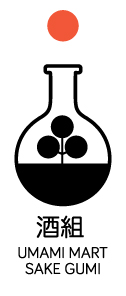 November sakes ship today for Sake Gumi, our monthly sake subscription club. If you like what's on deck here, you should join!
November sakes ship today for Sake Gumi, our monthly sake subscription club. If you like what's on deck here, you should join!
I am a Scorpio. We are said to be independent, intense, observant, loyal, wild, and resourceful in our best moments. The rest of the time, we are obsessive, suspicious, and secretive. Although I’m not a very superstitious person, I believe these things to be true of myself. No apologies.
To celebrate my birth sign, I wanted to highlight sake styles that best reflect the traits inherent to Scorpios. It was pretty obvious that if we Scorpios were bottled up as a sake, we’d be a
kimoto or
yamahai. Why? Because both kimotos and yamahais are wild and intense in flavor and require a mad obsessiveness to brew. The wild and often acidic flavor present in kimotos and yamahais are due to the fact that lactic acid is allowed to develop naturally in the yeast mash. On the other hand,
sokujo sakes, which make up 90% of sakes on the market, are made by adding pure lactic acid during the fermentation process. Cultivating lactic acid naturally results in a stronger sake.
So what’s the difference between a kimoto and yamahai? Kimoto is the original style of making sake. In addition to incorporating naturally-forming lactic acid during fermentation, the
kurabito (brewers) are required to physically mash the rice with a long pole. Mixing and mashing the rice during this process reduces the amount of oxygen present in the mixture, promoting the proliferation of lactic acid. At some point in time, brewers realized that they didn’t need to mix the mash with poles for lactic acid to proliferate sufficiently, hence the yamahai style was born. If we were to oversimplify the taste profiles of the two, kimotos tend to be more rustic and earthy, while yamahais tend to be bright and slightly tart.
Kimotos and yamahais are a reflection of their environment and its dynamics, since they require resources from the air, human brewers (versus modern, mechanized techniques), and double the fermentation time that sokujo sakes take. Because of this, kimotos and yamahais can be unpredictable, layered, and surprising. Just like your favorite Scorpio!
With that I’ll leave you with some noteworthy Scorpios: Bill Gates, Anna Wintour, Bjork, Marie Curie, and Drake.
Yoko
LEVEL 1: Introductory Membership (Two 300ml bottles)
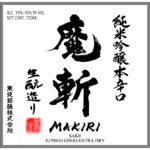 Makiri Junmai Ginjo Extra Dry Kimoto
Makiri Junmai Ginjo Extra Dry Kimoto
Tohoku Meijo Co., Ltd. (Yamagata, Japan)
Seimaibuai: 55%
SMV: +8
Although this sake is relatively dry for a
kimoto, it has the signature fragrance of shiitake mushrooms. Definitely not a pretty or fruity
ginjo, this sake has a rich mouthfeel but clean finish, similar to a
kome (rice) shochu. Try this earthy sake
chilled with
roasted vegetables or
lightly dressed salads, or slightly
warm alongside grilled
gindara (black cod).
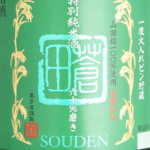 Souden Tokubetsu Junmai Yamahai
Souden Tokubetsu Junmai Yamahai
Kitaya Co., Ltd. (Fukuoka, Japan)
Seimaibuai: 60%
SMV: -3 to 0
Kayoko and I visited Kitaya in September. The brewery’s modern facilities coupled with a staff full of veterans convinced me that Kitaya brews each of their sakes with a clear vision. Souden is no exception. Kitaya sought to create a fruity, high-acid, and tart sake that pairs well with rich foods. To achieve this, they implemented the yamahai method and used
Yamadanishiki rice polished down to 60%. Although I enjoyed this with slices of
beef, this sake scored off the charts alongside
cream cheese on crackers. Try at
room temperature or
warm.
LEVEL 2: Premium Membership (Two 720ml bottles)
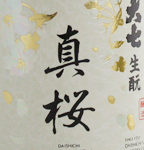 Masakura Kimoto Junmai Ginjo/strong>
Daishichi Sake Brewery Co., Ltd. (Fukushima, Japan)
Seimaibuai: 65%
SMV: +3.5
Masakura Kimoto Junmai Ginjo/strong>
Daishichi Sake Brewery Co., Ltd. (Fukushima, Japan)
Seimaibuai: 65%
SMV: +3.5
In recent years, kimoto has gained traction as a new generation of brewers explore terroir in sake-making. Naturally, they look to Daishichi, which has been brewing kimotos exclusively for over 300 years. The owner of Daishichi, Hideharu Ota believes in kimoto for its robustness and stability (thanks to the micro-organisms that naturally rise to the occasion during the fermentation process). This sake balances savory creaminess and bright fruitiness. Try it
chilled with
mashed potatoes or
creamed spinach.
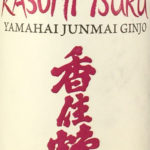 Kasumi Tsuru Yamahai Junmai Ginjo
Kasumi Tsuru Yamahai Junmai Ginjo
Kasumi Tsuru Co., Ltd. (Hyogo, Japan)
Seimaibuai: 55%
SMV: +4
Kasumi Tsuru specializes in kimoto and yamahai style sakes. When I asked the ninth generation owner, Yukio Fukumoto why he only brews these styles, he had a simple answer, “I want to make sakes that you don’t get tired of drinking.” To him, that means sakes shouldn’t be too flowery or fruity and that they should pair well with all types of food. This
yamahai junmai ginjo is a perfect example of this. Although there is a slightly fruity bouquet, the flavor expresses mild umami with a rustic backbone that melds into foods that are creamy and rich. Try this sake at
room temperature or
warm with
anything drenched in gravy or cream. Or even
pie! Do it.
 November sakes ship today for Sake Gumi, our monthly sake subscription club. If you like what's on deck here, you should join!
I am a Scorpio. We are said to be independent, intense, observant, loyal, wild, and resourceful in our best moments. The rest of the time, we are obsessive, suspicious, and secretive. Although I’m not a very superstitious person, I believe these things to be true of myself. No apologies.
To celebrate my birth sign, I wanted to highlight sake styles that best reflect the traits inherent to Scorpios. It was pretty obvious that if we Scorpios were bottled up as a sake, we’d be a kimoto or yamahai. Why? Because both kimotos and yamahais are wild and intense in flavor and require a mad obsessiveness to brew. The wild and often acidic flavor present in kimotos and yamahais are due to the fact that lactic acid is allowed to develop naturally in the yeast mash. On the other hand, sokujo sakes, which make up 90% of sakes on the market, are made by adding pure lactic acid during the fermentation process. Cultivating lactic acid naturally results in a stronger sake.
So what’s the difference between a kimoto and yamahai? Kimoto is the original style of making sake. In addition to incorporating naturally-forming lactic acid during fermentation, the kurabito (brewers) are required to physically mash the rice with a long pole. Mixing and mashing the rice during this process reduces the amount of oxygen present in the mixture, promoting the proliferation of lactic acid. At some point in time, brewers realized that they didn’t need to mix the mash with poles for lactic acid to proliferate sufficiently, hence the yamahai style was born. If we were to oversimplify the taste profiles of the two, kimotos tend to be more rustic and earthy, while yamahais tend to be bright and slightly tart.
Kimotos and yamahais are a reflection of their environment and its dynamics, since they require resources from the air, human brewers (versus modern, mechanized techniques), and double the fermentation time that sokujo sakes take. Because of this, kimotos and yamahais can be unpredictable, layered, and surprising. Just like your favorite Scorpio!
With that I’ll leave you with some noteworthy Scorpios: Bill Gates, Anna Wintour, Bjork, Marie Curie, and Drake.
Yoko
LEVEL 1: Introductory Membership (Two 300ml bottles)
November sakes ship today for Sake Gumi, our monthly sake subscription club. If you like what's on deck here, you should join!
I am a Scorpio. We are said to be independent, intense, observant, loyal, wild, and resourceful in our best moments. The rest of the time, we are obsessive, suspicious, and secretive. Although I’m not a very superstitious person, I believe these things to be true of myself. No apologies.
To celebrate my birth sign, I wanted to highlight sake styles that best reflect the traits inherent to Scorpios. It was pretty obvious that if we Scorpios were bottled up as a sake, we’d be a kimoto or yamahai. Why? Because both kimotos and yamahais are wild and intense in flavor and require a mad obsessiveness to brew. The wild and often acidic flavor present in kimotos and yamahais are due to the fact that lactic acid is allowed to develop naturally in the yeast mash. On the other hand, sokujo sakes, which make up 90% of sakes on the market, are made by adding pure lactic acid during the fermentation process. Cultivating lactic acid naturally results in a stronger sake.
So what’s the difference between a kimoto and yamahai? Kimoto is the original style of making sake. In addition to incorporating naturally-forming lactic acid during fermentation, the kurabito (brewers) are required to physically mash the rice with a long pole. Mixing and mashing the rice during this process reduces the amount of oxygen present in the mixture, promoting the proliferation of lactic acid. At some point in time, brewers realized that they didn’t need to mix the mash with poles for lactic acid to proliferate sufficiently, hence the yamahai style was born. If we were to oversimplify the taste profiles of the two, kimotos tend to be more rustic and earthy, while yamahais tend to be bright and slightly tart.
Kimotos and yamahais are a reflection of their environment and its dynamics, since they require resources from the air, human brewers (versus modern, mechanized techniques), and double the fermentation time that sokujo sakes take. Because of this, kimotos and yamahais can be unpredictable, layered, and surprising. Just like your favorite Scorpio!
With that I’ll leave you with some noteworthy Scorpios: Bill Gates, Anna Wintour, Bjork, Marie Curie, and Drake.
Yoko
LEVEL 1: Introductory Membership (Two 300ml bottles)
 Makiri Junmai Ginjo Extra Dry Kimoto
Tohoku Meijo Co., Ltd. (Yamagata, Japan)
Seimaibuai: 55%
SMV: +8
Although this sake is relatively dry for a kimoto, it has the signature fragrance of shiitake mushrooms. Definitely not a pretty or fruity ginjo, this sake has a rich mouthfeel but clean finish, similar to a kome (rice) shochu. Try this earthy sake chilled with roasted vegetables or lightly dressed salads, or slightly warm alongside grilled gindara (black cod).
Makiri Junmai Ginjo Extra Dry Kimoto
Tohoku Meijo Co., Ltd. (Yamagata, Japan)
Seimaibuai: 55%
SMV: +8
Although this sake is relatively dry for a kimoto, it has the signature fragrance of shiitake mushrooms. Definitely not a pretty or fruity ginjo, this sake has a rich mouthfeel but clean finish, similar to a kome (rice) shochu. Try this earthy sake chilled with roasted vegetables or lightly dressed salads, or slightly warm alongside grilled gindara (black cod).
 Souden Tokubetsu Junmai Yamahai
Kitaya Co., Ltd. (Fukuoka, Japan)
Seimaibuai: 60%
SMV: -3 to 0
Kayoko and I visited Kitaya in September. The brewery’s modern facilities coupled with a staff full of veterans convinced me that Kitaya brews each of their sakes with a clear vision. Souden is no exception. Kitaya sought to create a fruity, high-acid, and tart sake that pairs well with rich foods. To achieve this, they implemented the yamahai method and used Yamadanishiki rice polished down to 60%. Although I enjoyed this with slices of beef, this sake scored off the charts alongside cream cheese on crackers. Try at room temperature or warm.
LEVEL 2: Premium Membership (Two 720ml bottles)
Souden Tokubetsu Junmai Yamahai
Kitaya Co., Ltd. (Fukuoka, Japan)
Seimaibuai: 60%
SMV: -3 to 0
Kayoko and I visited Kitaya in September. The brewery’s modern facilities coupled with a staff full of veterans convinced me that Kitaya brews each of their sakes with a clear vision. Souden is no exception. Kitaya sought to create a fruity, high-acid, and tart sake that pairs well with rich foods. To achieve this, they implemented the yamahai method and used Yamadanishiki rice polished down to 60%. Although I enjoyed this with slices of beef, this sake scored off the charts alongside cream cheese on crackers. Try at room temperature or warm.
LEVEL 2: Premium Membership (Two 720ml bottles)
 Masakura Kimoto Junmai Ginjo/strong>
Daishichi Sake Brewery Co., Ltd. (Fukushima, Japan)
Seimaibuai: 65%
SMV: +3.5
In recent years, kimoto has gained traction as a new generation of brewers explore terroir in sake-making. Naturally, they look to Daishichi, which has been brewing kimotos exclusively for over 300 years. The owner of Daishichi, Hideharu Ota believes in kimoto for its robustness and stability (thanks to the micro-organisms that naturally rise to the occasion during the fermentation process). This sake balances savory creaminess and bright fruitiness. Try it chilled with mashed potatoes or creamed spinach.
Masakura Kimoto Junmai Ginjo/strong>
Daishichi Sake Brewery Co., Ltd. (Fukushima, Japan)
Seimaibuai: 65%
SMV: +3.5
In recent years, kimoto has gained traction as a new generation of brewers explore terroir in sake-making. Naturally, they look to Daishichi, which has been brewing kimotos exclusively for over 300 years. The owner of Daishichi, Hideharu Ota believes in kimoto for its robustness and stability (thanks to the micro-organisms that naturally rise to the occasion during the fermentation process). This sake balances savory creaminess and bright fruitiness. Try it chilled with mashed potatoes or creamed spinach.
 Kasumi Tsuru Yamahai Junmai Ginjo
Kasumi Tsuru Co., Ltd. (Hyogo, Japan)
Seimaibuai: 55%
SMV: +4
Kasumi Tsuru specializes in kimoto and yamahai style sakes. When I asked the ninth generation owner, Yukio Fukumoto why he only brews these styles, he had a simple answer, “I want to make sakes that you don’t get tired of drinking.” To him, that means sakes shouldn’t be too flowery or fruity and that they should pair well with all types of food. This yamahai junmai ginjo is a perfect example of this. Although there is a slightly fruity bouquet, the flavor expresses mild umami with a rustic backbone that melds into foods that are creamy and rich. Try this sake at room temperature or warm with anything drenched in gravy or cream. Or even pie! Do it.
Kasumi Tsuru Yamahai Junmai Ginjo
Kasumi Tsuru Co., Ltd. (Hyogo, Japan)
Seimaibuai: 55%
SMV: +4
Kasumi Tsuru specializes in kimoto and yamahai style sakes. When I asked the ninth generation owner, Yukio Fukumoto why he only brews these styles, he had a simple answer, “I want to make sakes that you don’t get tired of drinking.” To him, that means sakes shouldn’t be too flowery or fruity and that they should pair well with all types of food. This yamahai junmai ginjo is a perfect example of this. Although there is a slightly fruity bouquet, the flavor expresses mild umami with a rustic backbone that melds into foods that are creamy and rich. Try this sake at room temperature or warm with anything drenched in gravy or cream. Or even pie! Do it.

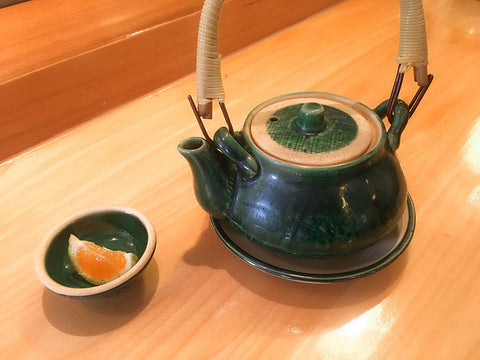


Comments (0)
There are no comments for this article. Be the first one to leave a message!